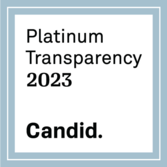Ways to Improve Wastewater
An effective treatment method or system for managing wastewater must include a balance of treatment technologies, reduction of pollution, and education. Reduction of pollution at the source is the responsibility of homeowners and industry, alike. Citizens can cut down on the volume of wastewater by reducing their water consumption and can improve the quality of wastewater by decreasing the amount of toxins they use in their households.
Improve the Quantity Used: Conservation and Reuse
According to the US Environmental Protection Agency, the average citizen uses 120 gallons of water per day. In 1998 alone, 65 billion gallons of effluent or treated wastewater were generated and pumped into the Atlantic Ocean off of the New Jersey shore. This amount of water, which can be both conserved and reused, takes its toll on our ecosystem.
Water Conservation
Citizens are using excessive amounts of water for their everyday activities, which greatly contributes to the increasing amount of water entering the wastewater treatment process.
How Do We Use Our Water?*
USE & PERCENT OF TOTAL TYPICAL HOUSEHOLD USAGE:
Toilet flushing: 40%
Bathing: 35%
Laundry: 12%
Kitchen: 10%
Outdoors: 3%
*Adapted from Save the Sound Education Programs
Improve the Quality: Reduction of Toxins
The only way to truly reduce toxins in the wastewater treatment process is to reduce toxin entry into wastewater facilities by reducing where these toxins are coming from. Click here to see how you can become part of the solution to this pollution.

